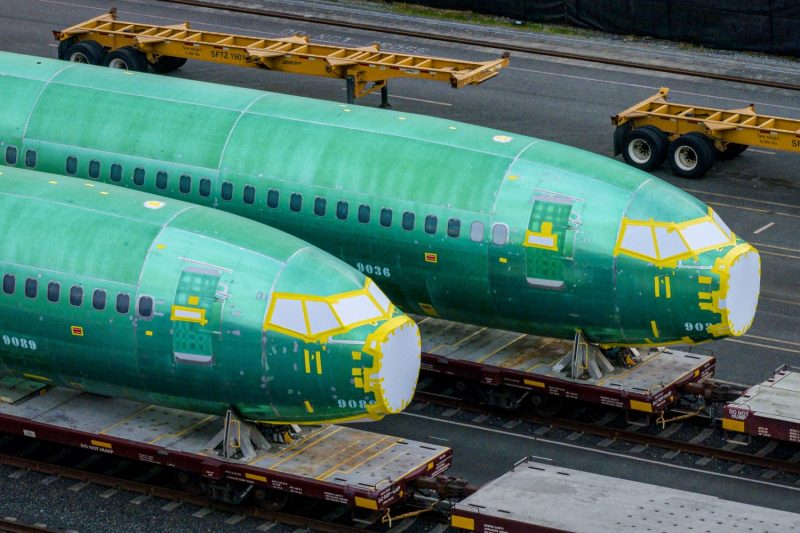All eyes were on Tesla (NASDAQ:TSLA), a key player in the electric vehicle (EV) market, as investors awaited the much-anticipated release of its Q1 2024 results on Tuesday (April 23).
Despite its prosperous past, Tesla has experienced a significant shift in its fortunes over the past year. It has struggled to maintain its position among the so-called Magnificent 7, a group of high-performing tech stocks that drove the major indexes in 2023.
Amid decreased demand for EVs, increased competition within the sector and a string of controversies that have followed the company and CEO Elon Musk throughout the years, Tesla’s share price has fallen 41.79 percent in 2024, making it one of the worst-performing stocks on the S&P 500.
After Tesla’s Q4 2023 results, released on January 24, confidence in the company seems to be declining. Figures reflected a 23 percent decline in gross profits and an 8 percent decrease in vehicle deliveries compared to the previous year.
Meanwhile, Chinese automaker BYD (HK.1211)achieved a record profit last year, reinforcing the notion that a growing number of formidable contenders are now challenging Tesla’s once-uncontested dominance in the EV market.
Chinese multinational tech company Xiaomi (HK.1810) recently ventured into the EV market with the launch of its model, the SU7. Xiaomi’s share price surged as much as 16 percent in the days after the launch, and the company recently announced that sales are up to five times higher than expected.
Perhaps in response to competition and declining profits, Tesla has implemented price cuts on several of its models. On April 19, the company cut the price of the Model Y, Model S and Model X by US$2,000 in the US. Cuts to models in parts of Europe, Africa, the Middle East and China were also reported on April 21.
Musk defended the price cuts as standard business practices in a post on X, formerly Twitter, saying, “Only a fool thinks the ‘MSRP’ is the real price. Tesla prices must change frequently in order to match production with demand.” The company also announced plans to lay off 10 percent of its workforce on April 15, news that sent shares down more than 5 percent.
Musk has been delving into various other ventures in recent years such as artificial intelligence research through his startup xAI; biotechnology with Neuralink, which achieved a significant milestone by implanting its first brain chip on January 28; and space exploration with Space X, which carried out its longest test flight on March 15 and launched 23 Starlink satellites from Florida’s Space Coast on April 23, marking the company’s 300th mission.
Tesla itself seems to have shifted its focus from vehicle production to perfecting technology to enable fully autonomous driving. On April 6, Musk posted to X that ‘Tesla is an AI/robotics and sustainable energy company,’ notably emphasizing AI and robotics first.
On April 5, Reuters reported that Tesla had called off the development of a US$10,000 EV model to narrow its focus to delivering a fully autonomous robotaxi. Musk has been promising to deliver an affordable EV for years, and shares fell by 6 percent once Reuters broke the news that the plan had been scrapped, a claim that Musk denied. Hours later, Musk announced his company’s robotaxi would be unveiled on August 8, sending shares back up almost 5 percent.
Analysts have raised concerns about the company’s new trajectory. Dan Ives, managing director and senior equity research analyst at Wedbush Securities and a Tesla investor since 2018, called out the company’s perceived lack of direction in a research note on April 12. “The future of Tesla is a bit murky now… Musk needs to give the clear road map and strategic vision for the Street, with Model 2 a key component,” he wrote.
On April 18, Deutsche Bank analyst Emmanuel Rosner said: ‘The delay of Model 2 efforts creates the risk of no new vehicle in Tesla’s consumer lineup for the foreseeable future, which would put downward pressure on its volume and pricing for many more years.’ The brokerage downgraded Tesla stock to a “hold” and reduced its price target from US$189 to US$123. Shares then fell 2.7 percent to US$151.26, their lowest price in over a year.
Likewise, David Baron told Bloomberg the potential 680 percent growth his company Baron Capital, a major Tesla investor, sees in the EV maker hinges on its ability to deliver an affordable car. Tesla makes up roughly 13 percent of the Baron Focused Growth Fund.
How did Tesla perform in Q1 2024?
Tesla’s Q1 2024 results were posted just after markets closed on April 23.
The company reported US$2.8 billion in capital expenditures, a 34 percent increase from last year, citing new cost-saving measures to “increase operational efficiency”. The company also expanded accessibility to its Full Self-Driving by reducing the cost of subscription to US$99 per month or US$8000 to purchase.
Total automotive revenue dropped 13 percent compared to last year, attributed to declining demand for EVs in favor of hybrid models and increasing competition within the EV market. Deliveries declined by 9 percent, as did total revenue, down to US$21.3 billion from US$23.3 billion. Non-GAAP earnings per share were US$0.45, slightly below Wall Street’s expectations of US$0.50. Operating expenses were up 37 percent from last year and 6 percent from Q3, but income from operations was 56 percent lower compared to last year and 43 percent lower compared to last quarter.
The company confirmed that it would be ramping up the development of autonomous driving technology but would also increase efforts to develop more affordable models. Development of the Model 2 appears to be going forward, with production set to start ahead of the previously projected mid-2025.
“We have sufficient liquidity to fund our product roadmap, long-term capacity expansion plans and other expenses. Furthermore, we will manage the business such that we maintain a strong balance sheet during this uncertain period,” wrote Musk, looking ahead to 2024.
The market responded favorably to the news, with shares jumping almost 8 percent roughly 10 minutes after the report’s release. The share price peaked at US$158.59 about an hour later, almost 10 percent higher than its closing price, before beginning a slight descent. As of writing, Tesla is trading for US$144.68.
Securities Disclosure: I, Meagen Seatter, hold no direct investment interest in any company mentioned in this article.


















